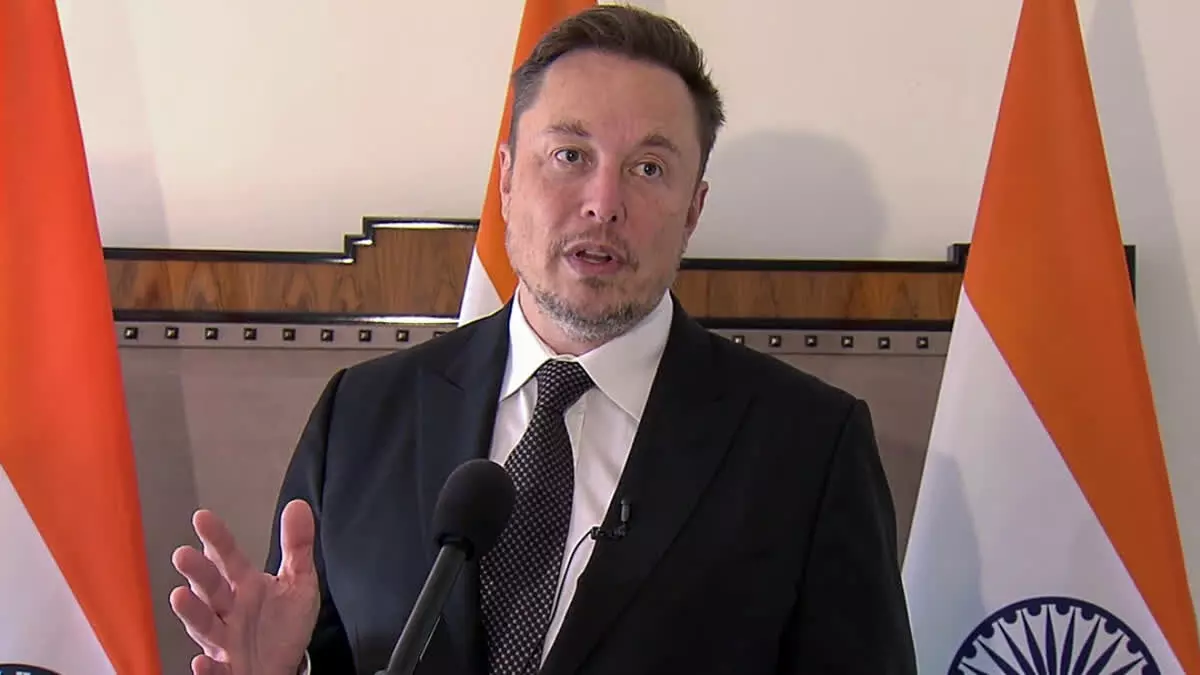Live
- 'Dilli ke Dil Mein Modi', BJP steps up attack on AAP ahead of polls
- PM Modi virtually lays stone for KRIS City from Visakhapatnam
- Jeans Park to Be Set Up in Ballari: 154 Acres Acquired, Says MB Patil
- 59 ultra-luxury homes sold in India for Rs 4,754 cr in 2024, 17 deals worth over Rs 100 cr
- TTD completes issuance of tokens for Vaikuntha dwara darshans
- Democracy ingrained in our lives: PM Modi at PBD convention
- Apple Deny Claims of Siri Data Misuse in Advertising
- Provide quality healthcare to patients at Ruia Hospital
- PM Modi flags off Pravasi Bharatiya Express, a special tourist train for NRIs
- Bengaluru overtakes Chennai to be India’s best city for working women in 2024
Just In
Elon Musk Warns of Global Population Decline as Major Threat


Elon Musk Warns of Global Population Decline as Major Threat
Population decline in India and China could reshape global power by 2100. Elon Musk calls it humanity's biggest challenge. Explore the implications.
Elon Musk has once again brought attention to the issue of global population decline. The Tesla CEO and SpaceX founder recently shared his views on the matter by responding to a post from Tesla Owners Silicon Valley on X, formerly known as Twitter. The post featured a graph projecting population trends for major nations between 2018 and 2100, with the caption: “Population collapse is humanity’s greatest threat… Elon Musk.” Musk replied with a simple “Yes,” reiterating his longstanding concerns about demographic challenges.
The graph shared in the post highlights significant demographic shifts expected by the end of the century. India’s population is projected to decrease by around 400 million, reducing its total to slightly under 1.1 billion. China faces an even steeper decline, with its population forecasted to drop by 731 million, leaving it at approximately 731.9 million. In contrast, Nigeria’s population is anticipated to grow substantially, reaching 790.1 million, which would make it the world’s second-most populous country.
The Tesla Owners Silicon Valley account, which originally shared the data, emphasized the seriousness of the issue, calling population collapse “humanity’s greatest threat.”
Experts point to several key factors contributing to population decline:
Falling Fertility Rates: Many nations now have fertility rates below the replacement level of 2.1 children per woman. For instance, England and Wales reported a record-low fertility rate of 1.44 in 2023, according to the Office for National Statistics.
Ageing Populations: Longer life expectancies, combined with declining birth rates, have led to ageing societies, placing economic and social systems under strain.
Migration Patterns: Some countries experience population losses due to emigration, further exacerbating demographic challenges.
Globally, fertility rates have declined from an average of 5.3 children per woman in 1963 to less than 2.5 today. This trend is expected to contribute to labour shortages, economic stagnation, and increased societal pressures in many regions. A 2020 study by the University of Washington suggested that population declines in countries like China and India could occur faster than previously estimated, raising concerns about shrinking workforces and reduced global influence.
Contrasting Trends in Population Growth
While nations like China and India face population declines, others are expected to see growth. The United States is projected to maintain population stability, largely due to positive net migration. Similarly, countries like Canada and Australia are expected to sustain their populations through immigration policies.
In contrast, nations such as Nigeria, Ethiopia, and the Democratic Republic of the Congo are poised for significant growth. By 2100, their populations may surpass those of middle-tier countries like Indonesia and Pakistan. These demographic shifts could lead to a realignment of global influence and economic power.
Musk has consistently warned about the risks associated with declining populations. He has described population collapse as a threat to technological advancement, economic stability, and societal development. Musk has also advocated for policies that encourage higher birth rates, particularly in ageing nations like Japan and several European countries where demographic challenges are already impacting economic growth.
The ongoing shifts in global population dynamics could have far-reaching implications. Countries facing population declines may need to adopt policies to mitigate labour shortages and economic stagnation. Conversely, nations experiencing rapid population growth may encounter challenges related to resource allocation and infrastructure development.

© 2024 Hyderabad Media House Limited/The Hans India. All rights reserved. Powered by hocalwire.com






